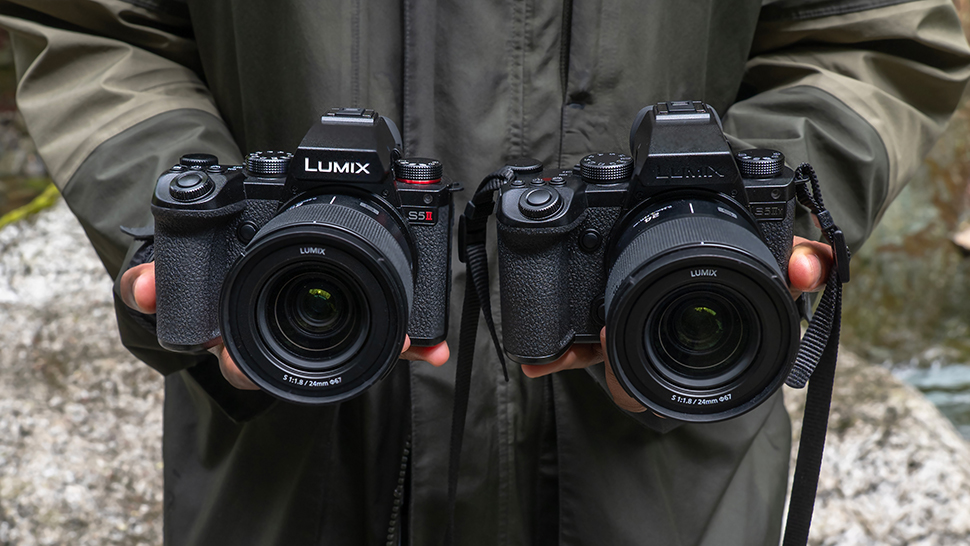
Dual camera and development announcements – I hate them. They make little sense from a consumer or a brand perspective. As a person who buys cameras, why would I buy a ‘lesser’ model now, knowing a similar model with slightly better specs is being released a few months later? From a brand perspective, why cut your next camera release’s legs off at the knees? Unless the aim is to put people off buying the latest camera and drive sales to the following one?
We’ve lived with dual camera announcements for years. I believe the practice started in the DSLR and early full-frame mirrorless days, with the release of cameras like the Nikon D800/D800E and the Sony A7/A7R. Then Canon followed with its 5DS and 5DS R. The purpose was to create more specialized options for photographers. These variant models allowed people to choose between having a camera with or without a low pass (anti-aliasing) filter, for example.
Fast-forward to 2021, and the long-awaited announcement of the Lumix GH5 Mark II. At the same time as announcing the successor to the popular GH5, Panasonic decided to announce the successor to the… Lumix GH5 Mark II. The Lumix GH6, which would come out a few months later, was announced along with the GH5 II. I haven’t seen the sales, but I imagine the GH5 II wasn’t a blockbuster release.
So it was interesting to see Fujifilm go down the same route with the X-H2 and X-H2S, the following year. The two similarly specced cameras, announced months apart, differ in sensor resolution and technology, allowing the S model to capture images at a faster burst rate – whereas the X-H2 with its higher resolution sensor can capture up to 8K/30p video. This strategy seems to be hedging bets; recognizing the varying needs of creators, companies are trying to provide something for two distinct target audiences. But at what cost?
Recently, we’ve seen Panasonic return to the dual camera release strategy, this time with the Lumix S5 II and S5 IIX, two nearly-identical cameras. Save for the attractive dark-mode look of the X model, it also offers additional features that come at a slight premium. For a bit more money, creators can get a lot more camera, one that’s capable of external SSD and RAW recording, direct Wireless IP and Wired streaming functionality and ProRes recording format.
Choice is a welcome luxury, and we are spoiled today. But I can’t help but feel like this camera release strategy is more of a detriment to the industry than a benefit. Buying a camera body is a high-value and considered choice. It’s not something many can afford to do on an annual basis, let alone every six months when a previously announced variant body is released. Too many announcements affect the purchasing confidence of consumers, especially those as meticulous as camera buyers. I’d love to see camera companies making the best camera they can with each generation, picking an audience and catering for them.
If your target is filmmakers, give them everything a modern creator needs – don’t withhold functions such as streaming. If it is sports and wildlife photographers, give them the fastest sensor and AF system possible and don’t divert resources to developing a higher-resolution twin body aimed at creators who might be better served by a medium-format camera.
How do you feel about this trend? Does it hurt your buying confidence?
Read more of Jon Devo's Scanning Ahead blogs
Read more:







